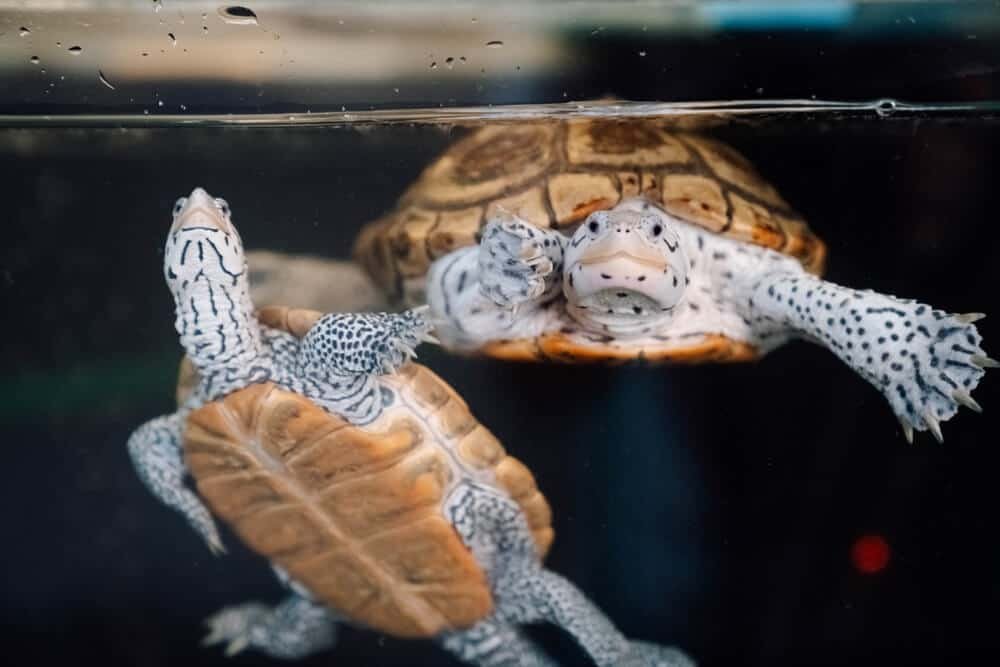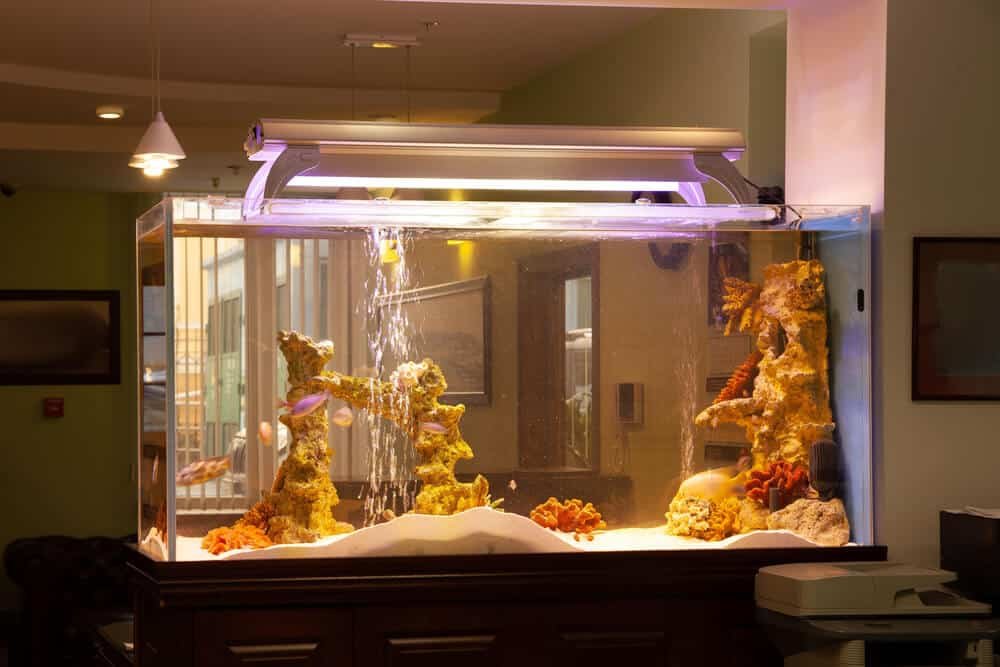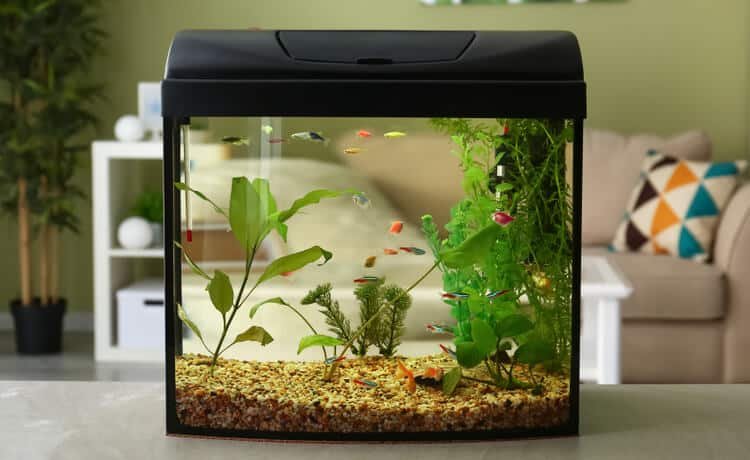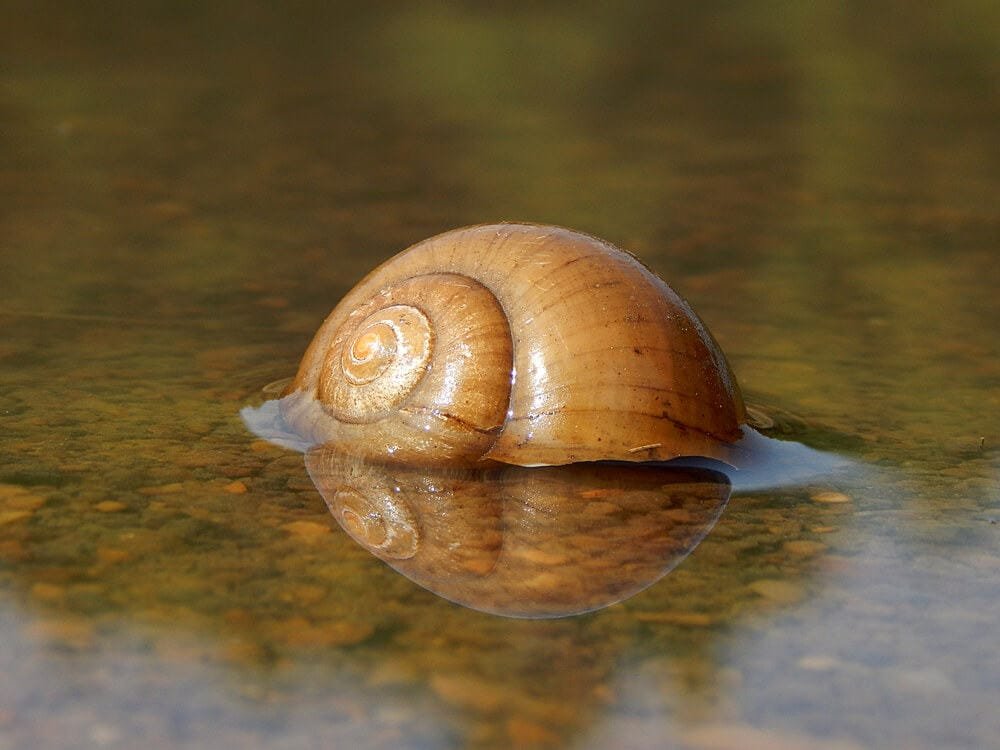One of the most difficult parts of being a turtle owner is keeping a clear and spotless tank.
Should you be concerned about green tank water? The good news is that it’s perfectly normal because it’s all part of the biological cycle.
Green water in turtle tanks is sometimes caused by algae development, which isn’t especially toxic in and of itself.
However, it is important to pay attention to the tank conditions because they may suggest other abnormalities that could be hazardous to your turtle and other tank occupants.
The sections below will explain the possible reasons for your water turning green so quickly and how to minimize it in the future.
What Causes Green Water In Your Turtle Tank
Have you ever experienced something like this? You wake up one day to find the water in your turtle tank turns electric green.
After changing the water and thinking that you have fixed the issue, the green color reappeared two days later.
If you ever find yourself in this situation, the following factors could be to blame.
1. Excessive Lighting
Too much lighting is one of the factors that promote algae growth. Algae love light, and too much light in the presence of a nutrition source will send algae into overdrive.
This explains why turtle owners who place their aquariums near a window often find it difficult to keep algae under control. Sure, sunlight is beneficial to turtles in many ways, but it can also hasten algae growth.
Limiting direct sunlight for your turtle aquarium is a great way for keeping it clean longer. However, don’t keep the tank completely dark because your turtle will need to bask in direct sunlight from time to time.
2. Improper Filtration
Water quality will gradually deteriorate if there is a lack of water changes and an ineffective filtration system.
This offers an excellent habitat for algae to flourish and take over the aquarium over time.
Mineral substances such as potassium may also accelerate algal growth, underlining the significance of a decent filtration system.
3. Unbalanced pH
It is critical to monitor and adjust pH levels on a regular basis in order to keep your turtle tank water in good condition.
The pH level in your tank is important because it helps maintain ideal amounts of dissolved chemicals and microorganisms, which keeps your turtle happy in its environment.
4. Bacterial Bloom
If the cloudy appearance of the aquarium water is milky white in hue, it is most likely due to a bacterial bloom.
This is common when you change your water since there is an imbalance in the bacteria colonies existing at the time.
When the bacteria in your tank are disturbed, they reproduce quickly, resulting in hazy water and a stinky odor in your tank.
If this is the case, simply leave it alone because the bacteria is beneficial in maintaining the pH level and the cloudiness will fade after a few days.
How To Prevent The Water In Your Turtle Tank From Turning Green So Fast
Whether you have a little Spotted Turtle or an enormous Aldabra tortoise, keeping your pets’ water habitat clean and healthy is critical to their overall wellness.
Here are some suggestions for keeping the water in your turtle tank from becoming green so quickly.
1. Provide Proper Lighting
Your turtle is a cold-blooded animal, which means it relies on sunshine to regulate its body temperature. In fact, they can spend up to 14 hours every day basking in the sun in their natural habitat.
However, exposing the turtle tank to so much sunlight is probably not the best decision if your main goal is to keep the water clean.
So, what is the best thing to do then? The answer is to move your tank to a more protected spot and use artificial lights instead!
When putting together a turtle tank, never forget to include a UVB light.
It aids in maintaining the balance of Vitamin D3 production in reptiles and amphibians, which can lead to Metabolic Bone Disease if your turtle does not get enough of it.
You should also get a basking light, which is essential since it provides your pet turtle with much-needed warmth. Fortunately, a basic halogen light in a dome lighting fixture should suffice.
2. Don’t Overstock And Overfeed
The feeding frequency required by turtles is determined by their size, species, and maturity. As a result, you need to check your turtle to find out when it is hungry and how much you should feed it.
You should also avoid overcrowding the tank with aquatic animals. Not only is it dangerous for your turtle to eat them, but it can also create ammonia and nitrate rises, worsening the algae condition.
Aquatic plants are by far the greatest options because they can consume the nutrients that algae enjoy.
3. Improve Maintenance Habits
Frequent water changes are vital for keeping an aquarium healthy and preventing algae-derived outbreaks.
Remove any uneaten food and vacuum the pebbles lightly. Make sure that the replacement water contains no trace of nitrates and phosphates.
A good filtration system should also make maintenance easier.
Ask a pet store for advice in choosing one, as turtles are quite messy and require additional filtration. Feeding the turtle in a different vessel can also aid in reducing waste in the water.
4. Check The Water
Spring water is ideal for use in turtle tanks since it is free of chemicals as well as minerals that can promote algae growth.
So, if you have the testing kit, test your aquarium water for chemical concentration on a regular basis and take precautions to ensure that nitrate and phosphate levels are not too high.
The Takeaway
When your turtle tank becomes cloudy quickly, the type of filter you use, the amount of food you feed your turtles, and tank cleaning frequency are often the most determining factors.
In addition, don’t be overly worried about algae in your tank because a small amount of the green stuff is actually beneficial to fish and aquatic turtles.







